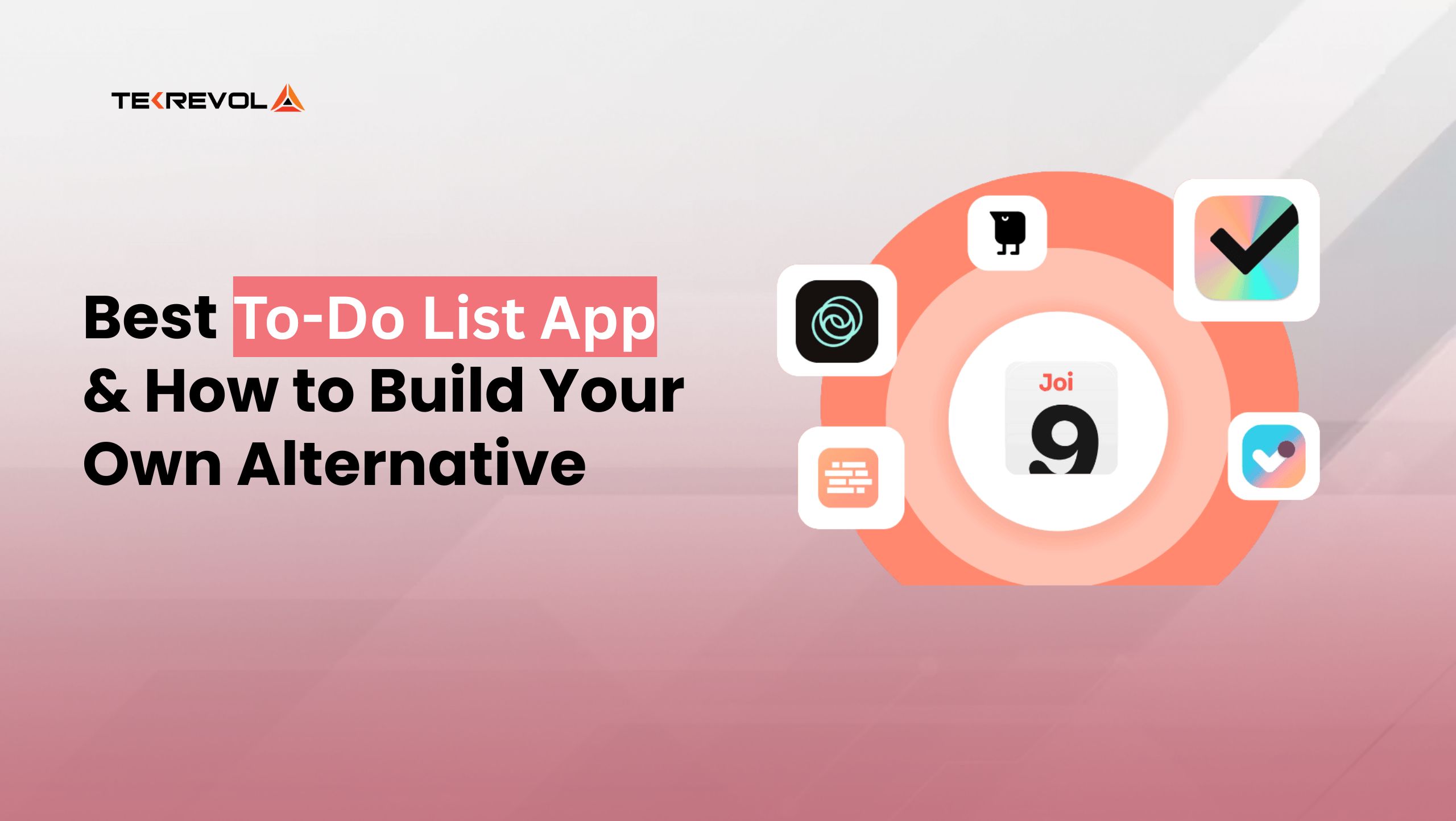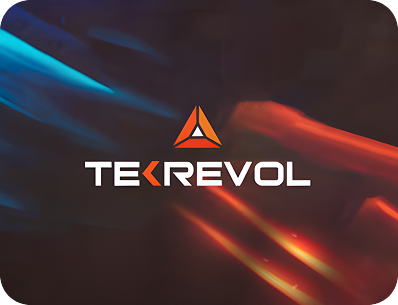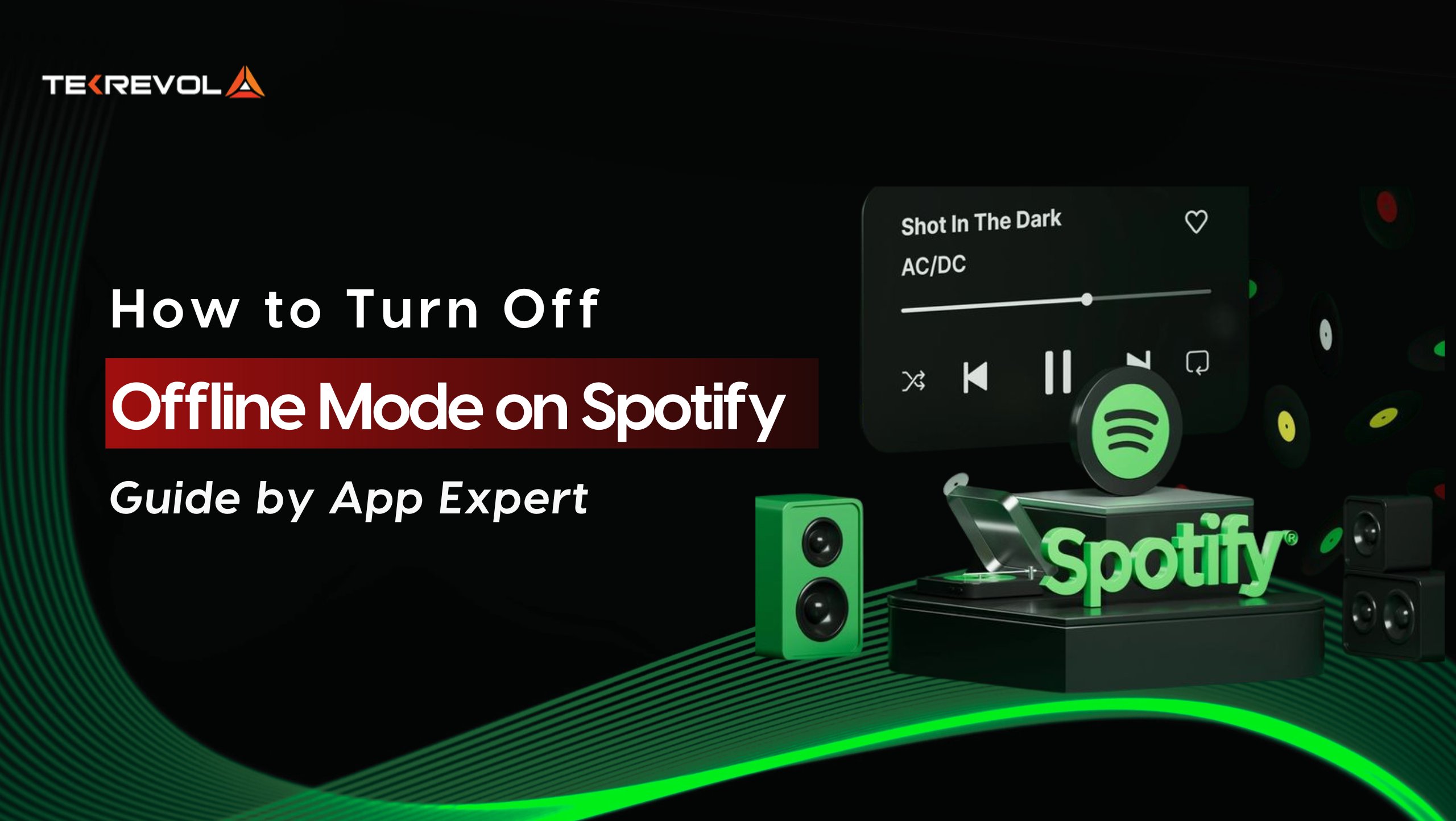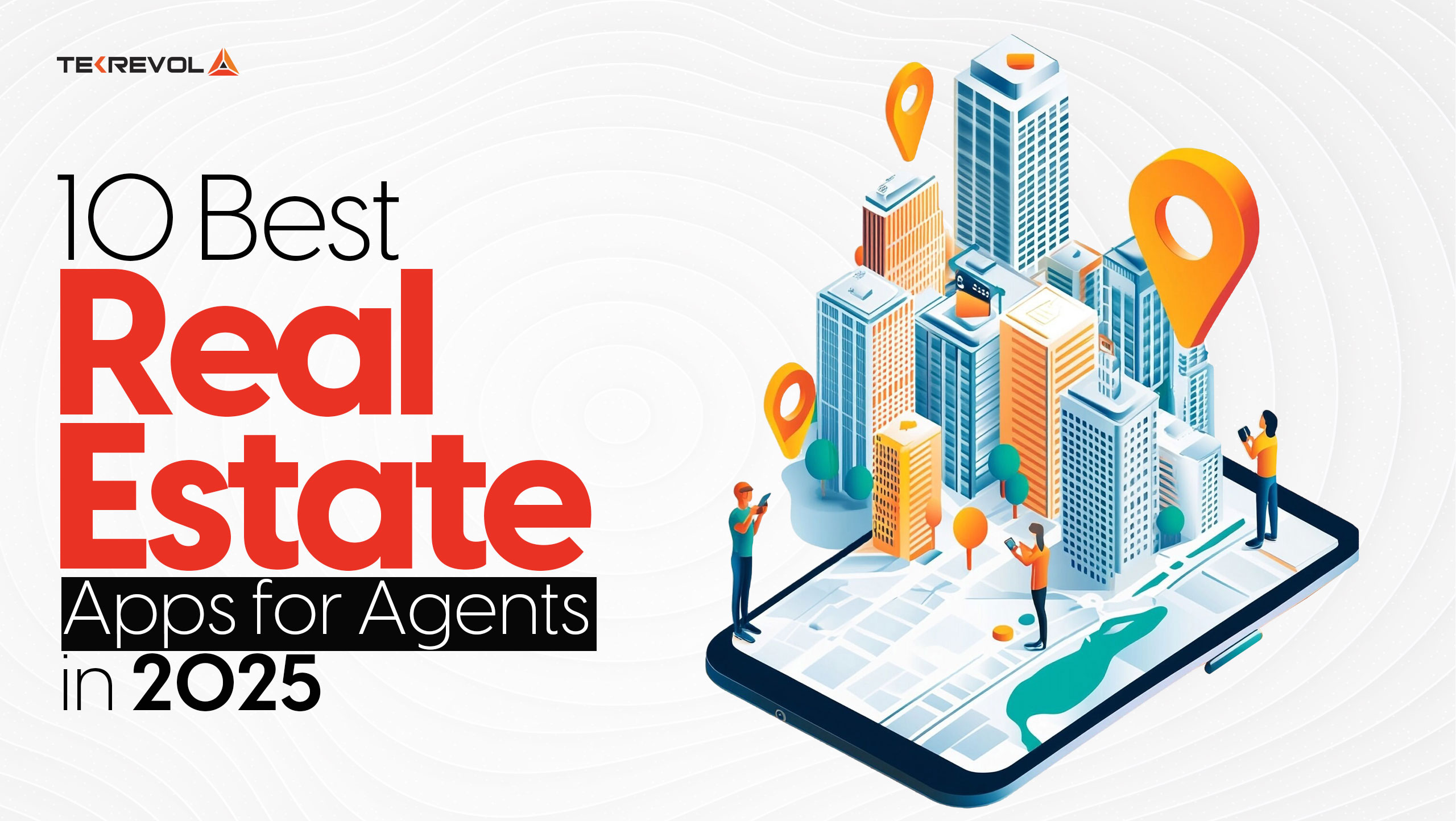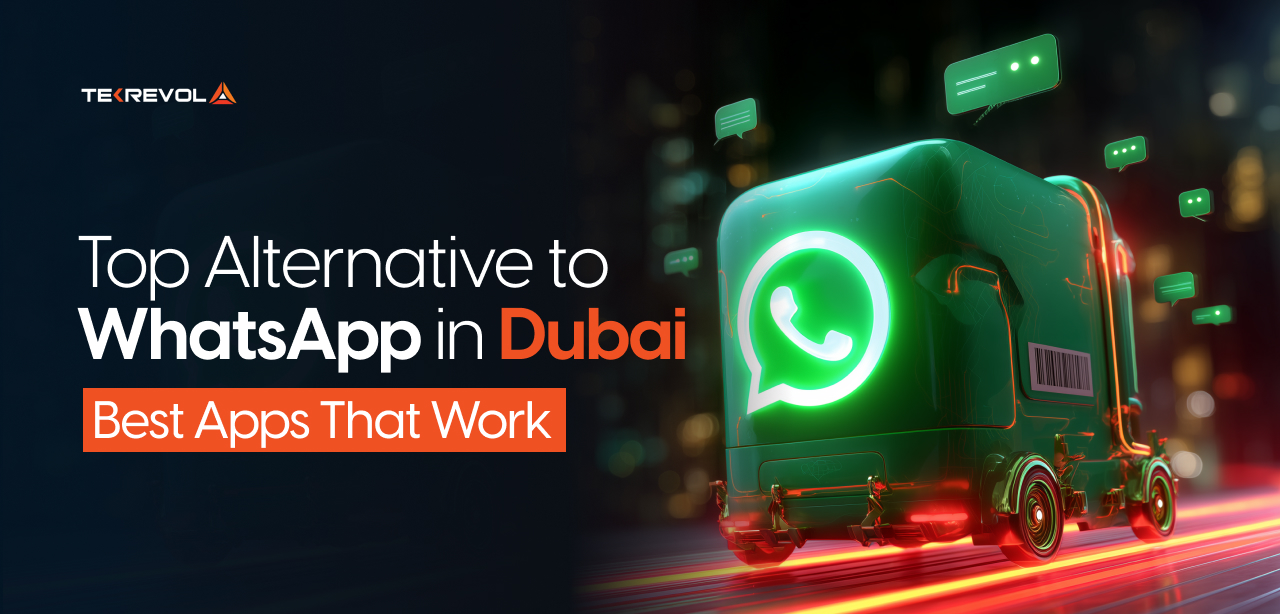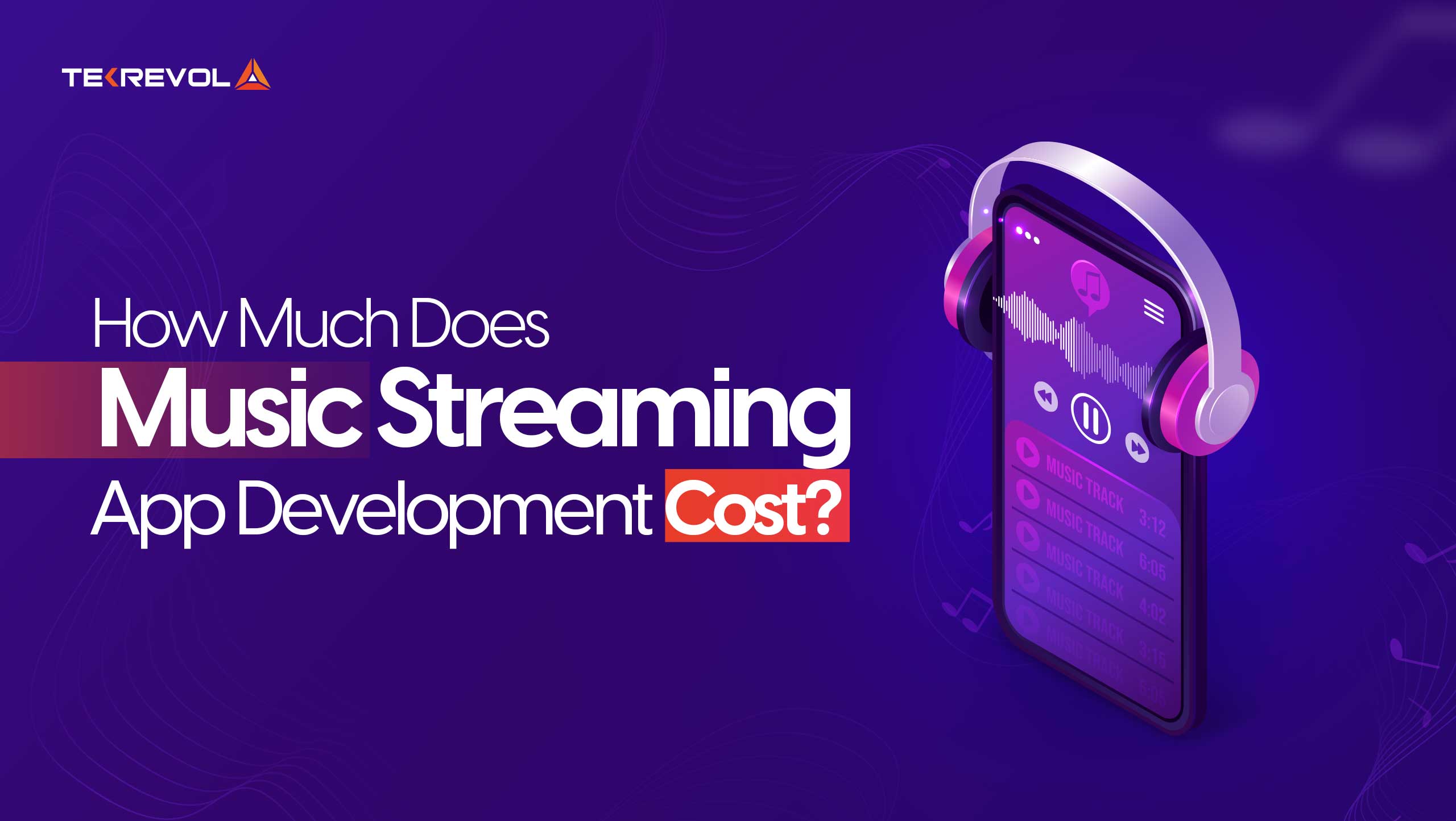Trying to stay organized in today’s world is like trying to juggle with one hand tied behind your back. With deadlines, meetings, and personal tasks constantly piling up, it’s no wonder most of us drop the ball sometimes. If your to-do list lives in five different places, email, notes app, and your head, you’re not alone.
In fact, 82% of people do not use a dedicated time‑management system. Crazy, right? Just like content calendar apps have changed the way teams organize their work. That’s where to-do list apps have become such lifesavers, and are helping millions stay on track.
But here’s the thing: not every app works for every person. Some feel too bloated. Others? Way too basic. And if you’ve ever tried to get your team on the same app, well… good luck with that.
So here’s the big question:
Should you just find “the best to-do list app”, or is it time to build your own that actually fits your workflow?
In this blog, we’re diving into both sides. We are going to discuss the most optimal task management app on the market, what it can do best, and how you can get inspired and create your own custom alternative.
What Is a To-Do List App Really For?
A to-do-list application reminds you of all things you have to do, never lose focus when you work or in your personal projects, and even when running errands. It is a convenient and efficient way of making sure you have a record of what should be done, whether it should have already been done, and how well it could fit in your schedule.
As opposed to the mental checklists or the stuffing notes all over the surroundings or one piece of paper you know you will never lose, but you always seem to somehow lose it every time, a digital to-do list goes all of that into the same location that you can access anywhere and anytime.
If you’re a business owner looking for the right tools to boost productivity, don’t miss our blog: 11 Modern Apps Every Entrepreneur Needs for Business Management.
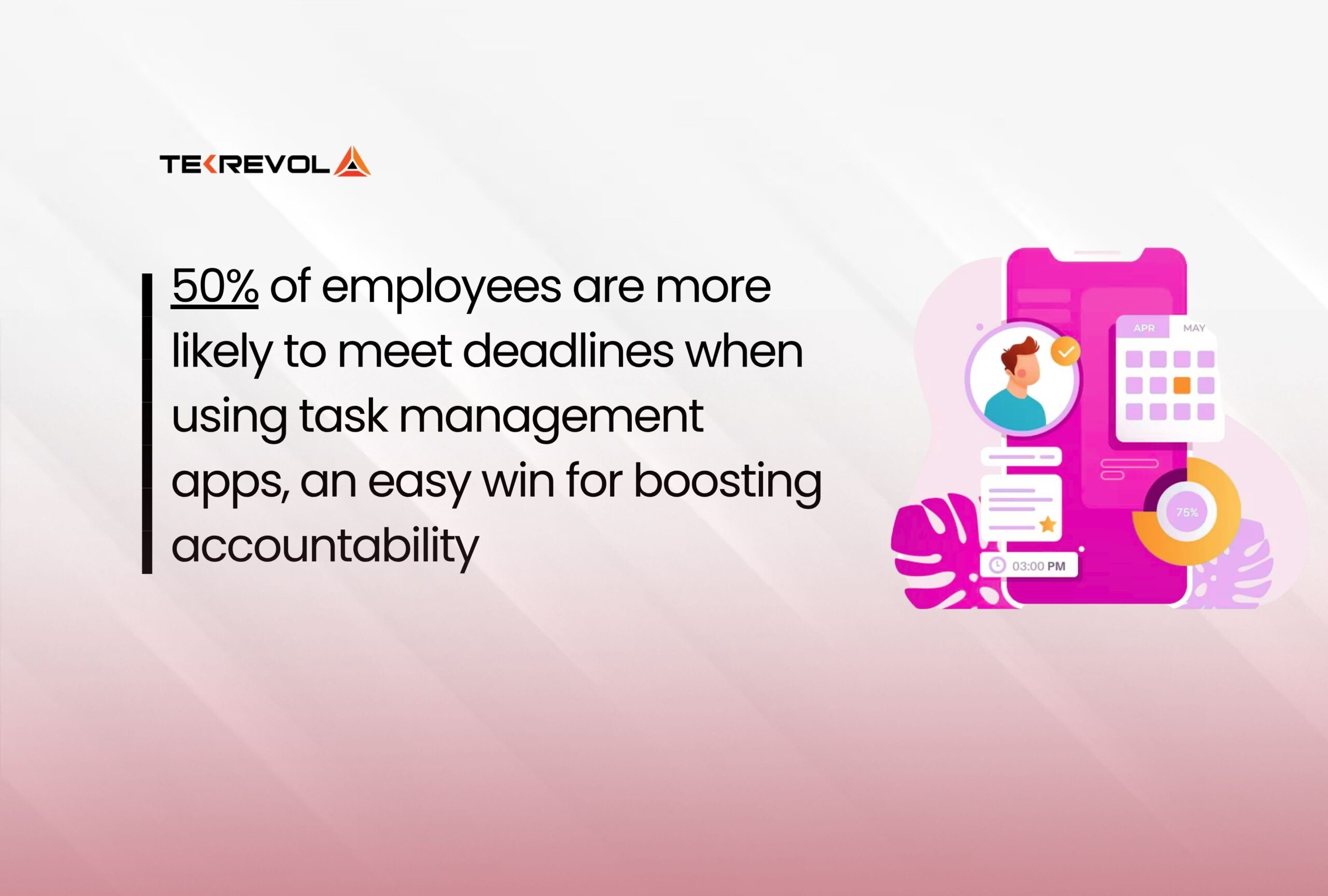
Best To-Do List Apps That Actually Work in 2025
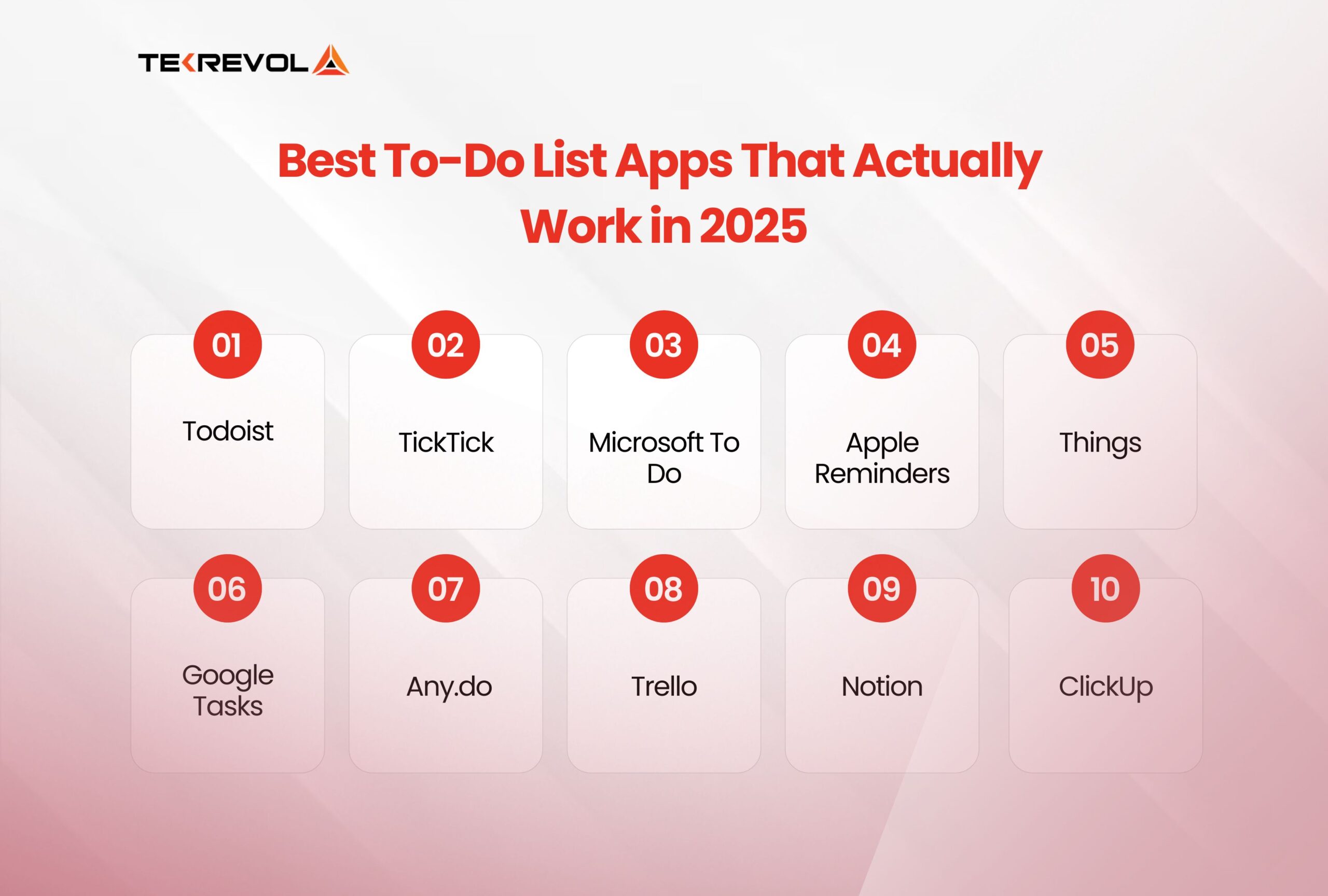
With all the productivity software available, selecting the right to-do list app can be daunting. We’ve listed some of the best currently available to-do list apps.
1. Todoist – The Overall Champion for Personal and Group Productivity
Todoist is a productivity powerhouse and for excellent reasons. It offers a simple interface that contains only the necessary information to make it easy to manage tasks. Todoist flexes to your workflow, whether you manage a big team of people in the workflow of a project manager, or you are planning your week as an individual user. It offers high customization through labels, priorities, and filters, without being too much to handle.
Pricing: Basic free plan available; Premium starts at $5/month
Key Features
- Natural language task entry
- Repeating tasks and priorities
- Collaborative project spaces and productivity monitoring
2. TickTick – Ideal for Time Blocking and Concentration Lovers
TickTick gets beyond the simple to-do list. It comes with a built-in Pomodoro timer, a Habit tracker, and a calendar view feature – great for arranging your day through time slots.
Pricing: Free option available; Premium from $3.99/month
Key Features:
- Habit tracking and Pomodoro timer
- Smart filters and calendar integration in lists
- Sub-tasks and multiple reminders
3. Microsoft To Do – Perfect for Microsoft 365 Users
If Microsoft 365 is already your productivity toolkit, Microsoft To Do is a seamless and powerful addition. It seamlessly integrates with Outlook to enable you to convert marked emails into tasks with due dates and reminders.
Pricing: Totally Free
Key Features:
- Elegant integration with Outlook and Microsoft 365
- My Day planning and shared lists
- Syncing cross-device with Windows, Android, iOS, and web
4. Apple Reminders – Natively Convenient for Apple Users
Apple Reminders is a native application on every Apple device, providing an elegant and unexpectedly capable means of task management. With Siri integration, iCloud syncing, and strong integration with Apple Calendar, it’s ideal for those who want their to-dos integrated within their ecosystem. It’s not showy, but it works flawlessly for Apple die-hards.
Pricing: Totally Free (built-in on Apple devices)
Key Features:
- Location-based reminders
- Siri voice control
- Syncing between iPhone, iPad, Mac, and Apple Watch
5. Things – For Minimalists Who Adore Beauty and Function
Things is an elegantly crafted task manager that’s created specifically for the Apple ecosystem. It’s ideal for people who like a distraction-free environment without sacrificing power. Tasks can be sorted into projects, categorized by area, and scheduled with a breeze. It even comes with a “Today” view that filters out what you absolutely need to pay attention to now.
Pricing: One-time purchase – $49.99 for Mac, $19.99 for iPad, $9.99 for iPhone
Key Features:
- Integration of calendar and projects
- Sophisticated drag-and-drop task reordering
- “Today” and “Upcoming” views for simplicity
6. Google Tasks – For Gmail and Google Calendar Enthusiasts
Google Tasks is a small and easy-to-use to-do app that supports Google Calendar and Gmail. It is an ideal tool for users who prefer keeping task management simple and in the Google world. It is pretty simple to transform emails into tasks by clicking on the emails, giving them due dates, and visualizing tasks in your calendar. It lacks advanced features like tags or collaboration; its simplicity is the exact reason why it is good for users.
Pricing: Fully Free
Key Features:
- Integration of Gmail and Google Calendar
- Creating tasks quickly from emails
- Access through mobiles and desktops using Google Workspace
7. Any.do – Ideal for Creating a Daily Habit
Any.do is more than a task manager; it’s a planner. Its novel “Plan My Day” function pushes you to schedule tasks every morning, which suits users who have difficulty staying on track with typical to-do lists.
Pricing: Free basic; Premium from $7.99/month
Key Features:
- “Plan My Day” guided scheduling
- Integration of calendar and to-do list
- Voice-to-task input and recurring reminders
8. Trello – Best for Visual Task Management
Trello works well with visual thinkers. Using a kanban board layout, it is possible to create lists, drag the tasks across columns, and visually manage the projects. It is a perfect choice both for teams and individuals, and groups that have a multi-step process, like content planning, marketing, or development. Instead, power-ups (plugins) enable you to enhance the plugin with features like calendars, voting, automation, etc..
Pricing: Free version available; Premium starts at $5/user/month
Key Features:
- Drag-and-drop task cards and lists
- Collaboration tools with comments and due dates
- Customizable with Power-Ups and automation rules
9. Notion – All-in-One Workspace for Custom To-Do Lists
Notion gives customers the flexibility they need to create task systems at a level never before possible. It can be as simple as a checklist or as comprehensive as a database that includes tasks, due dates, priority, and even assigned files.
It is ideal in case a user wants a unified place to combine notes, tasks, and wikis. Notion requires some time to configure, but when configured to your workflow, it is extremely powerful.
Pricing: Free; Paid plans starting at $8/month
Key Features:
- Personalized templates, databases, and task views
- Team collaboration and calendar integration
- Kanban, list, timeline, and gallery views
10. ClickUp – Feature-Rich Productivity for Teams
ClickUp is a project management tool that seeks to substitute multiple tools with one program. It works best with teams that manage projects, delegate tasks, track progress, and communicate in real time. It has documents, objectives, time control, and process automation all packaged into it. Although ClickUp may be initially challenging to use, it’s the perfect tool for those who would rather control project and task management.
Pricing: Free plan option; Premium plans begin at $7/user/month
Key Features:
- Highly customizable taskboards
- Goal setting, time tracking, and automation
- Docs, chat, and team collaboration features
Still not feeling the spark with any of the existing apps?
Partner with us and bring your to-do list app vision to life.
Book A FREE Call Now!How to Build a Feature-Rich To-Do List App from Scratch in 2025
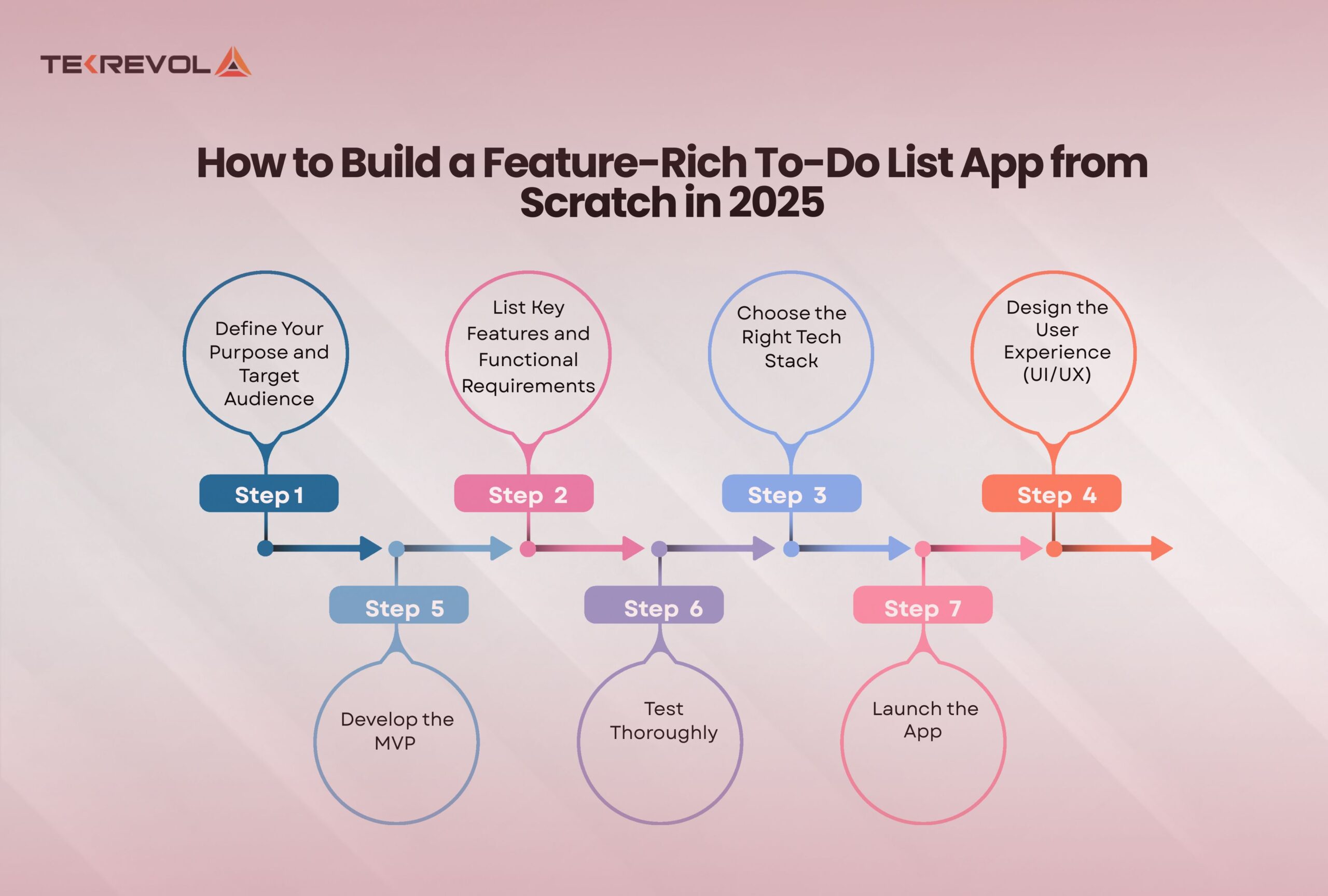
So, here are the steps that you should follow to build a custom to-do list app:
1. Define Your Purpose and Target Audience
Before you start coding, focus on why you’re developing the app:
- Purpose: What issue are you fixing? Task management, habit formation, or team cooperation: which of these is simple?
- Audience: Are you building an application for hectic professionals, students, families, or remote teams?
- Market Gap: Explore well-liked apps, including Todoist, Notion, and Microsoft To Do. What are they lacking? Perhaps it’s AI automation, simplicity, or gamification.
2. List Key Features and Functional Requirements
Next, the to-do list app you create should have functionality. Before you dive straight into development, it is good to understand what your to-do list app will do.
Think about the features that other well-known apps don’t have, then look for ways to incorporate those shortcomings into your own. Some of the features that your to-do list app should have include the following:
| Basic Features | Productive Features | Advanced Features |
| Task creation | Recurring tasks | Natural language input (NLP) |
| Edit/delete tasks | Notifications & reminders | AI-powered task suggestions |
| Task categorization (lists/tags) | Calendar view | Voice Task Input |
| Due dates | Sync across devices | AI suggestions for smart scheduling |
| Task prioritization | Offline mode | Gamification (rewards/streaks) |
| Checklist/subtasks | Collaboration & task sharing | Third-party integrations (Slack, Google Calendar) |
| Simple search | Dark/light mode | Smart widgets for the home screen |
| Task completion toggle | Secure user login | Analytics for productivity insights |
3: Choose the Right Tech Stack
The only way to create a scalable, high-performing to-do list app is with the appropriate tools. Your objectives, timeframe, financial constraints, and preferred platforms (iOS, Android, web, or all of them) will determine how you use the required technology stack.
Here’s a suggested tech stack to use:
| Layer | Technology | Purpose |
| Frontend | Flutter or React Native | Cross-platform UI for mobile (iOS & Android) |
| React.js or Vue.js | For building a responsive web interface | |
| Backend | Node.js with Express.js | Handles API logic, task management, and user data |
| Django (Python) or Laravel (PHP) | Alternative full-stack back-end options | |
| Database | Firebase Firestore or MongoDB | Real-time, cloud-hosted NoSQL database for storing tasks |
| PostgreSQL | For more complex, relational data handling | |
| Authentication | Firebase Auth or Auth0 | Secure user login and account management |
| Notifications | Firebase Cloud Messaging (FCM), OneSignal | For real-time task reminders and push notifications |
| Cloud Storage | AWS S3 or Firebase Cloud Storage | For storing files, user data backups |
| Hosting | Vercel, Netlify (for frontend); Heroku, AWS, or GCP | Hosting web app and backend services |
| Analytics | Google Analytics, Firebase Analytics | For tracking user behavior and improving UX |
4: Design the User Experience (UI/UX)
Your to-do list application must help a consumer to remain focused and not get distracted, should be easy to navigate, and have a clear visual style.
Beginning with the simple wireframes demonstrating the critical screens, like the list of tasks, schedule view, details of the tasks. Make interfaces be simple yet user-friendly.
Prioritize:
- Mobile-first design with responsive layouts.
- Simple navigation and rapid task input options.
- Color coding for priority and deadline.
- Accessibility features such as legible fonts and voice support.
Before development, create prototypes and use tools like Figma or Adobe XD to execute fast usability tests to refine the user flow.
5: Develop the MVP (Minimum Viable Product)
A wise first move when you design your to-do list program is creating a Minimum Viable Product (MVP). Creating an MVP lets you test your idea in the market and save initial time and cost investment.
For a to-do list application, your MVP should include:
- User sign-up/login
- Task creation and editing
- Task due dates and reminders
- Marking tasks as done
- Simple categorization (e.g., personal, work)
- Task synchronization across devices
Once the MVP has settled and early feedbacks start pouring in, you are able to begin adding additional features slowly and incrementally, like a recurrent task, collaboration, or tracking of relative productivity.
6: Test Thoroughly
Your to-do list application has to undergo thorough testing before going live, to ensure that there are no bugs when it is run on all kinds of devices, and under any conditions. List of things to focus on during this stage:
- Functional Testing: Test some fundamental features such as adding to-do tasks, reminders, synchronizing, and notifications.
- Usability Testing: Get the feedback of the user to improve UI/UX.
- Cross-Platform Testing: Examine the app functionality and the UI across the platforms and operating systems (iOS, Android, web).
- Performance Testing: Check how the system would be able to respond to different loads, particularly in syncing or real-time updates.
- Security Testing: Test that user data is stored and transmitted securely, particularly login data and task data.
7: Launch the App
To promote your to-do list application, it is not enough to launch it into the App Store or Google Play; it is important to make the proper first impression and establish the foundation of future growth and user feedback.
Some of the aspects to watch for during the launch include:
- App Store Optimization (ASO): To do the proper app store optimization, you have to write a great description of the app filled with keywords, submit screenshots, and select an amazing app icon to push installs.
- Beta Testing Feedback: Construct any last-minute improvements as suggested by the beta testers.
- Onboarding Experience: simplifying the user-first-time experience, simple and instructional, making use of tooltips, walkthroughs, or preliminary checklists.
- Marketing and Promotion: Advertise your release with email marketing, social media, blog entry posts, and even technology
- Monitor Analytics: Use Firebase or Mixpanel to monitor user behaviour, retention, and crash reports as early as the first day of data.
The global productivity app market is expected to reach $14.7 billion by 2028.
Partner with us to build a next-gen to-do app customized to how people work.
Book A FREE Call Now!Partner with TekRevol to Build a Feature-Rich To-Do List App
We’ve all been there, installing app after app, hoping this one will finally fit our daily routine. But whether it’s too basic or overly complicated, most to-do list apps just don’t get it right. That’s when people start thinking: “What if I built my own?” At TekRevol, we help you do exactly that: create a smarter, cleaner, and fully customizable productivity app.
We collaborate with founders, startups, and companies who are eager to develop innovative, user-focused productivity apps. As a top mobile app development firm, we assist you in turning the idea in your mind into reality and making it even more fantastic. You just need to give us your vision, leave the rest to us. From idea to code, we’ll give you a whole blueprint to have your to-do list app designed, developed, and deployed successfully.
Have a vision for the perfect to-do list app?
Share your app preferences with our team and get a custom development plan
Schedule A FREE Consultation Now!
